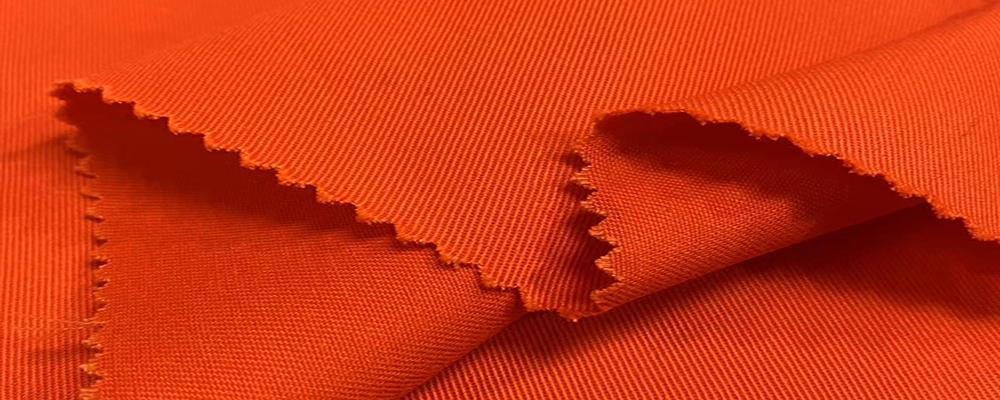Among all kinds of textile fabrics, it is difficult to distinguish the front and back of some fabrics, and it is easy to make mistakes if there is a slight negligence in the sewing process of the garment, resulting in errors, such as uneven color depth, uneven patterns, and serious color differences. , The pattern is confused and the fabric is reversed, which affects the appearance of the garment. In addition to the sensory methods of seeing and touching the fabric, it can also be identified from the structural characteristics of the fabric, the characteristics of the design and color, the special effect of the appearance after special finishing, and the label and seal of the fabric.

1. Recognition based on the organizational structure of the fabric
(1) Plain weave fabric: It is difficult to identify the front and back of plain weave fabrics, so there is actually no difference between the front and back (except calico). Generally, the front of plain weave fabric is relatively smooth and clean, and the color is uniform and bright.
(2) Twill fabric: Twill weave is divided into two types: single-sided twill and double-sided twill. The grain of the single-sided twill is clear and obvious on the front, but blurred on the reverse. In addition, in terms of the inclination of the grain, the front grain of the single yarn fabric is inclined from the upper left to the lower right, and the grain of the half-thread or full-line fabric is inclined from the lower left to the upper right. The front and back grains of the double-sided twill are basically the same, but the diagonal to the opposite.
(3) Satin weave fabric: Since the front warp or weft yarns of satin weave fabrics float more out of the cloth surface, the cloth surface is flat, tight and shiny. The texture on the reverse side is like plain or twill, and the luster is relatively dull.
In addition, warp twill and warp satin have more warp floats on the front, and weft twill and weft satin have more weft floats on the front.
2. Recognition based on fabric pattern and color
The patterns and patterns on the front of various fabrics are relatively clear and clean, the shapes and line outlines of the patterns are relatively fine and obvious, the layers are distinct, and the colors are bright and vivid; dimmer.
3. According to the change of fabric structure and pattern recognition
The weave patterns of jacquard, tigue and strip fabrics vary a lot. On the front side of the weave pattern, there are generally fewer floating yarns, and the stripes, grids and proposed patterns are more obvious than the reverse side, and the lines are clear, the outline is prominent, the color is uniform, the light is bright and soft; the reverse side has blurred patterns, unclear outlines, and dull color . There are also individual jacquard fabrics with unique patterns on the reverse side, and harmonious and quiet colors, so the reverse side is used as the main material when making clothes. As long as the yarn structure of the fabric is reasonable, the floating length is uniform, and the fastness of use is not affected, the reverse side can also be used as the front side.
4. Recognition based on fabric selvage
Generally, the front side of the fabric is smoother and crisper than the back side, and the side edge of the back side is curled inward. For the fabric woven by the shuttleless loom, the front selvage edge is relatively flat, and it is easy to find the weft ends on the back edge. Some high-end fabrics. Such as woolen cloth. There are codes or other characters woven on the edge of the fabric. The codes or characters on the front are relatively clear, obvious, and smooth; while the characters or characters on the reverse side are relatively vague, and the fonts are reversed.
5. According to the appearance effect identification after special finishing of fabrics
(1) Raised fabric: The front side of the fabric is densely piled up. The reverse side is a non-fluffed texture. The ground structure is obvious, such as plush, velvet, velveteen, corduroy and so on. Some fabrics have dense fluff, and even the texture of the ground structure is difficult to see.
(2) Burnt-out fabric: The front surface of the pattern that has been chemically treated has clear outlines, layers, and bright colors. If it is burnt-out suede, the suede will be plump and even, such as burnt-out silk, georgette, etc.
6. Identification by trademark and seal
When the whole piece of fabric is inspected before leaving the factory, the product trademark paper or manual is usually pasted, and the pasted side is the reverse side of the fabric; the date of manufacture and the inspection stamp on each end of each piece are the reverse side of the fabric. Different from domestic products, the trademark stickers and seals of export products are covered on the front.
We are polyester rayon fabric,wool fabric and polyester cotton fabric manufacture with more than 10 years,if you want to learn more,welcome to contact us!
Post time: Nov-30-2022

